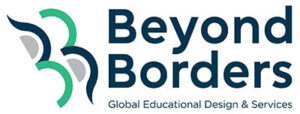Media and Information Literacy: A Lifeline for Children in Gaza and Beyond
Media and Information Literacy: A Lifeline for Children in Gaza and Beyond

As we mark Media and Information Literacy (MIL) Week in October, it is increasingly evident that MIL has become essential for navigating today’s world, especially in crisis settings. MIL has evolved from a skill primarily valued in academic settings to a critical tool for survival. In emergency settings, this competency takes on added significance.
This is not just about combating fake news or rumors; it is about survival. For students and teachers in ongoing emergencies, the ability to discern fact from fiction can mean the difference between life and death.
“In conflict zones and disaster-stricken areas, misinformation can spread like wildfire, causing panic, fear, and potentially life-threatening consequences,” notes Irene Khan, the UN Special Rapporteur on freedom of expression.
Globally, the impact of conflicts on education is profound. As of 2023, over 222 million children and adolescents are affected by conflicts, disasters, and displacement, according to Education Cannot Wait (ECW). In these environments, access to reliable information is often limited, leaving children vulnerable to dangerous falsehoods that can exacerbate their situation.
When integrated into education—especially in these critical situations—Media and Information Literacy (MIL) empowers children and teachers to make informed, life-saving decisions while fostering resilience and critical thinking.
Misinformation as Psychological Warfare
Misinformation has long been used as a tool of psychological warfare. In conflict areas, distorted narratives create mistrust, confusion, and fear within affected communities, undermining social cohesion. Social media platforms further amplify these dehumanizing narratives by allowing biased or manipulated content to spread rapidly. For example, in the ongoing crisis in Gaza, social media often circulates biased depictions of Palestinians, which reduces the complexity of their situation to harmful stereotypes and undermines public empathy for the humanitarian aspects of their plight. These narratives not only fuel animosity but also desensitize audiences globally to the suffering of affected communities, potentially prolonging conflict and division.
MIL gives individuals the competencies to critically assess information, discerning biases and understanding the role media plays in shaping perceptions and behaviors. According to UNESCO, MIL empowers citizens to “seek, critically evaluate, and use information effectively in all areas of their lives.” However, the complexity of conflict environments requires more than standard MIL practices.
Integrating Conflict Sensitive Education (CSE) with MIL ensures that educational approaches are responsive to the dynamics and sensitivities of conflict zones. UNESCO has pioneered courses that incorporate both MIL and CSE, enhancing resilience, critical thinking, and peace-building in children exposed to crisis settings. Conflict sensitivity means recognizing the specific context of a conflict and adapting educational strategies to mitigate tension and avoid reinforcing harmful stereotypes. This integrated approach allows children to understand the mechanics of propaganda and disinformation, resist divisive rhetoric, and become agents of peace in their communities. It also encourages tolerance, fostering a culture of dialogue and understanding—qualities that are urgently needed in conflict zones.
The Role of MIL in Supporting Students and Teachers During Emergencies
1. Fostering Critical Thinking
MIL equips students and teachers with the skills to question the reliability of information, a crucial asset in emergencies. As Dr. Divina Frau-Meigs, a leading scholar in MIL, explains,
“In times of crisis, the ability to think critically and make informed decisions can save lives.”
In conflict zones, MIL helps students and teachers examine various viewpoints and avoid harmful ideologies.
2. Combating Misinformation
Misinformation spreads easily in emergencies, where fear and uncertainty create fertile ground for falsehoods. The International Federation of Red Cross and Red Crescent Societies notes that misinformation can deepen social divisions and erode trust in crisis response. Teaching students to verify information and cross-check sources can significantly reduce the harmful impact of misinformation in these settings.
3. Building Digital Literacy
When traditional education is disrupted in crisis zones, digital literacy becomes essential. Many children in conflict areas rely on online platforms for continued learning. MIL enables students to access credible educational resources and safely interact with teachers and peers. As UNESCO Director-General Audrey Azoulay observes, “By empowering students with MIL, we help them thrive in a complex, digital world.”
Teachers as Information Gatekeepers
In crisis settings, teachers become critical gatekeepers of information. By equipping them with MIL competencies, we enable them to guide their students in developing a discerning, critical approach to information. As former UN Secretary-General Ban Ki-moon once said:
“In a world in which information is power, we must ensure that everyone, especially the most vulnerable, has the tools to use it wisely.”
MIL is not just an educational benefit but an urgent necessity in today’s global crises. For children in conflict zones, MIL provides essential skills to navigate and make sense of the media they encounter. By integrating MIL into educational programs, we can empower the next generation to become informed, resilient citizens and active contributors to peace.

